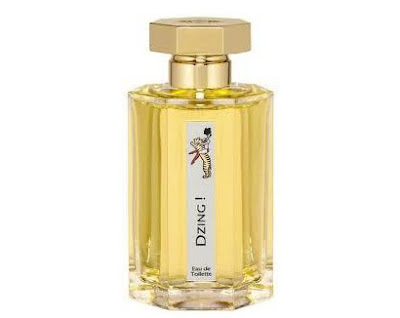I am the type of person who is always willing to try new things, and, when he finds one that is sympatico with his personality, latches onto it with all his teeth and claws.
My new thing is writing with a dip pen. I was doing some cleaning and discovered a pen holder, a few nibs, and a couple of bottles of ink, all of which I had just forgotten I even owned. I tried writing with the pen and ink and discovered that I liked it a
lot: there is something tactile and almost sensual about it that it not present when you write with a ball-point pen. I am aware that if I had no choice, if I had to use pen-and-ink, I would quite possibly hate it, because there are drawbacks, including spillage, scratchy spattery nibs, ink-stained fingers, drips, blotting, and more, but it's like making mayonnaise: you can just buy the stuff, or you can use a blender or a hand-held mixer, but there is something physical and intimate about making it by hand with a whisk and your own two arms, whatever the drawbacks.
If you are going to use a dip pen and nice ink, then you ought to have an interesting inkwell. Early in August we spent the weekend in Prince Edward Island, driving around and just relaxing: I'm not a beach person, but I sure like to drive. (Or be driven: I haven't been behind the wheel of a car in at least five years, but I'm a great passenger, and since Jim likes to drive, that works out pretty well for both of us.) We went to an estate auction and a couple of antiques places but didn't find anything. I did, however, find at the auction an old travelling set consisting of three glass bottles of maybe an ounce each with silver sheaths and caps, all in a leather case, which women used to decant their perfumes into while travelling: all were empty, of course, but one of them (yes, of course I opened them all) contained the dried but still fragrant dregs of something may have been spectacularly beautiful once or may just have been run-of-the-mill, but it had been perfume, honest-to-god perfume and not some flower water, because what remained was mostly oakmoss, that former mainstay of the perfume industry. I didn't stick around to bid on it, because what use would it have been to me?
Then last weekend we went to Halifax, and my mission was the same: find an inkwell! Again, we went to an auction and a few antiques places, again I was thwarted in my inkwell quest, and again I found an old perfume bottle fragrant with remnants. This one was probably a four-ounce glass bottle with a bulb sprayer and a footed silver (or silvery metal) filigree sheath. Unscrewing the cap, though the bottle itself was quiet empty, unleashed a torrent of scent, mostly from sludge gathered around the threads, and what was that smell? Yes, of course: oakmoss again, huge and brazen. The price was $5. I didn't buy it. Again, what was I going to do with it? Sniff it every now and then? Scrape off the sludge and dissolve it in alcohol?
I did, on the other hand, buy some
amazing ink and some
thoroughly excellent paper: I'm not buying any more scents for a while if I can help it, but now I'm buying ink. (And if you are thinking that ink is just ink, I invite you to take a gander at the
ink-review page at the Fountain Pen Network: hundreds upon hundreds of inks, meticulously sampled and reviewed. Just like perfume reviews!) So perhaps my primary obsession was never really scents: perhaps it was liquids in bottles. Thank god I don't drink.
+
There are two ways to look at Lancôme's 1950 release Magie (not Magie Noire, a dark oriental launched in 1978).
If we look at Magie from a modern point of view, then it's hopelessly old-fashioned: there's no fruit in it, no white musk, no caramel and vanilla, nothing that would appeal to today's target market of 16-to-24-year-olds. Magie has a shimmery aldehydic top note hovering above a big bouquet of flowers, lots of rose and jasmine (of course) among others but without any one flower predominating, and a civety-woody base with lots of oakmoss, because pretty much everything had oakmoss in those days. It is very French in its classical pyramid structure, absolutely natural-smelling, rich and luscious, utterly irresistible. Anybody older than 40 would be thrilled to get their hands on something so beautiful, not least to remember the way perfumery used to be: to a modern nose, though, it doubtless smells like old-lady perfume.
But if we consider it as a vintage scent, here's the odd thing: it's nothing special. I've smelled a number of things like it over the years: there isn't any particular element that sets Magie apart, no extraordinary magic to it, despite its name. I have a feeling that upon its release, it was just another drop in the sea of floral chypres, of which there were too many to count or remember. And there is your paradox: compared to modern commercial perfumes, Magie is unquestionably excellent, but would be dismissed as old-fashioned by modern noses, whereas in its time, it was one excellent scent among many just like it, and would (I suspect) have been dismissed by 1950s noses as well. (And I could be wrong: perhaps it was heralded as a great exemplar of the art form in its day. I can't find any evidence of that, though, and its eventual discontinuation suggests otherwise.)
Magie probably sold well enough for a decade or two, back before there were a thousand or more new scents being launched every year: there would have been at most eight or ten Lancôme fragrances on the counter at that time (after the initial collection was established, they were being launched every two to four years, a rate which Lancôme continued until the industry floodgates opened in the mid-'90s), so if a customer wanted a Lancôme scent, or a floral chypre, then Magie had as good a chance as any of selling enough to be worth continued manufacture — for a time, at any rate. But discontinued it was. A few years ago, Lancôme revived it with three other old standbys (Sikkim, Climat, and Sagamore), but I never did smell any of them, because I have never yet encountered a modern reformulation, however good its intentions, that could compare to the original.
That picture up there, by the way, is not mine (I borrowed it from the limitless Internet and I hope I am not stepping on anyone's toes), but that is exactly the bottle that I have, a one-ounce eau de cologne which is at least as strong as a modern eau de parfum. (the box says 90°, which means it's 10% fragrance oils, comparable to a modern eau de toilette: but in terms of lasting power and sheer quality of materials it's more like an EDP than a dilute, fresh EDC.) If you should ever see this, and you lament the direction modern perfumery has taken or you just want to see what a perfectly ordinary, run-of-the-mill (though very well-made and beautiful) fragrance was like in 1950, then you need to snap it up.
Labels: Chypre








